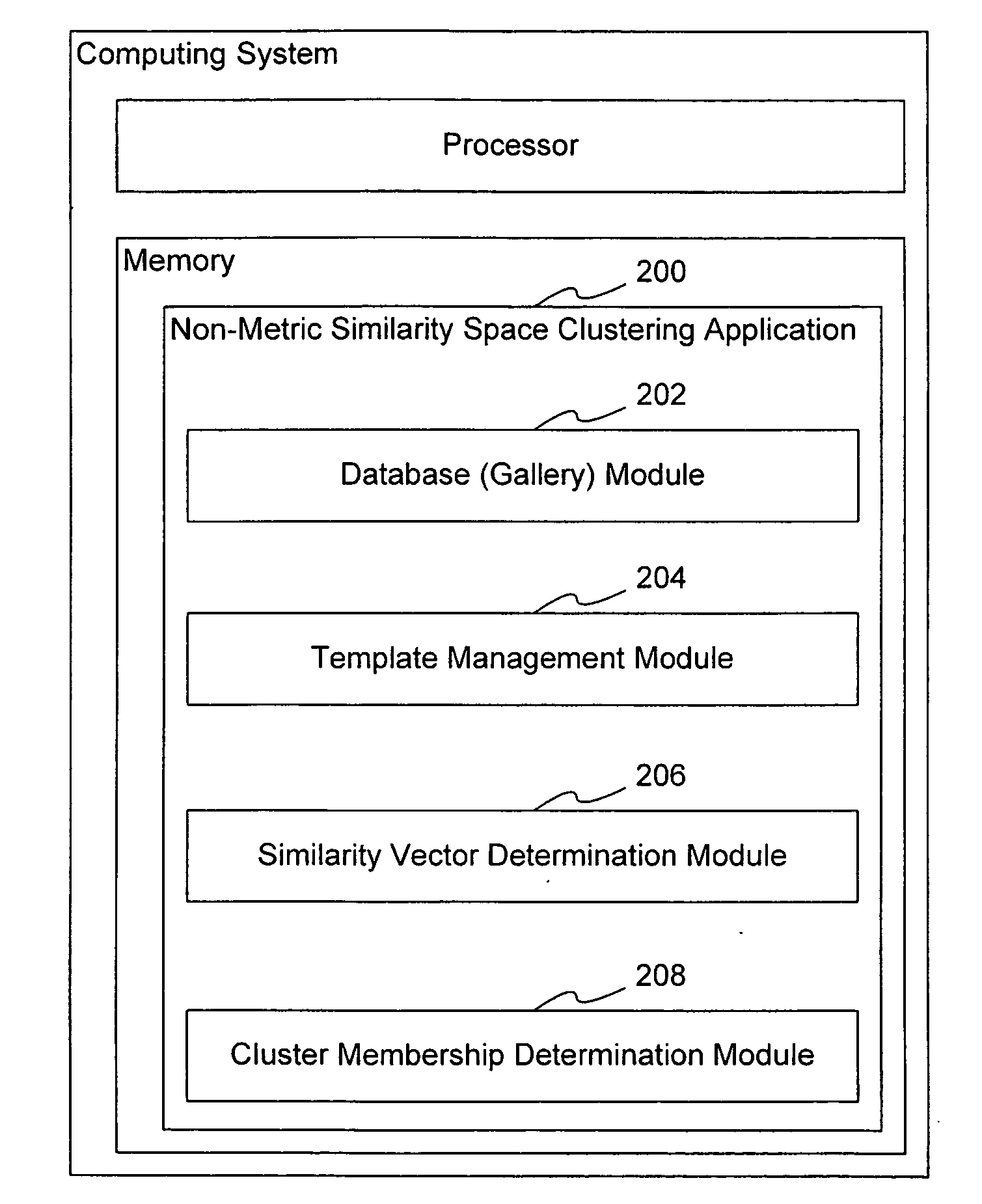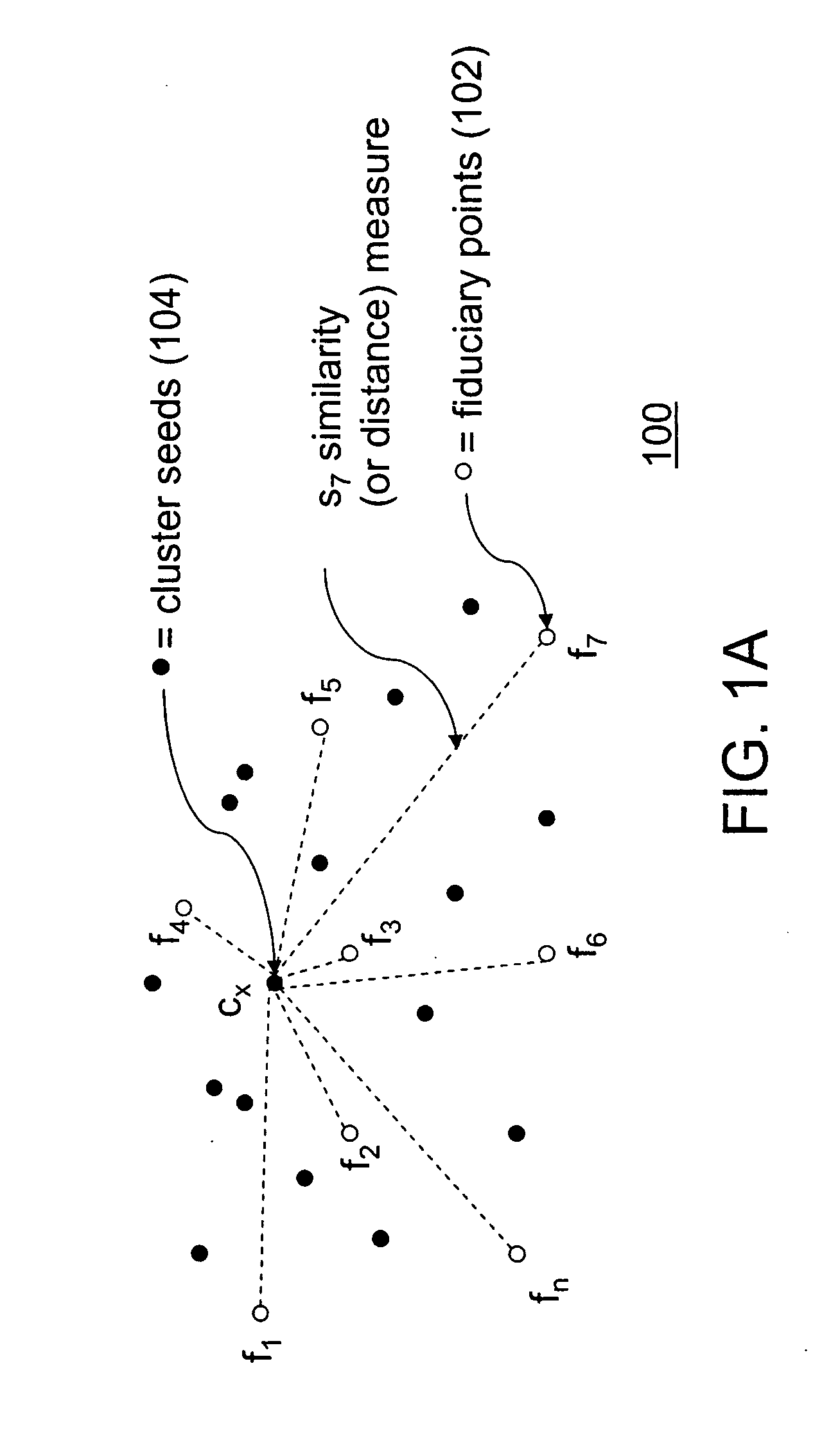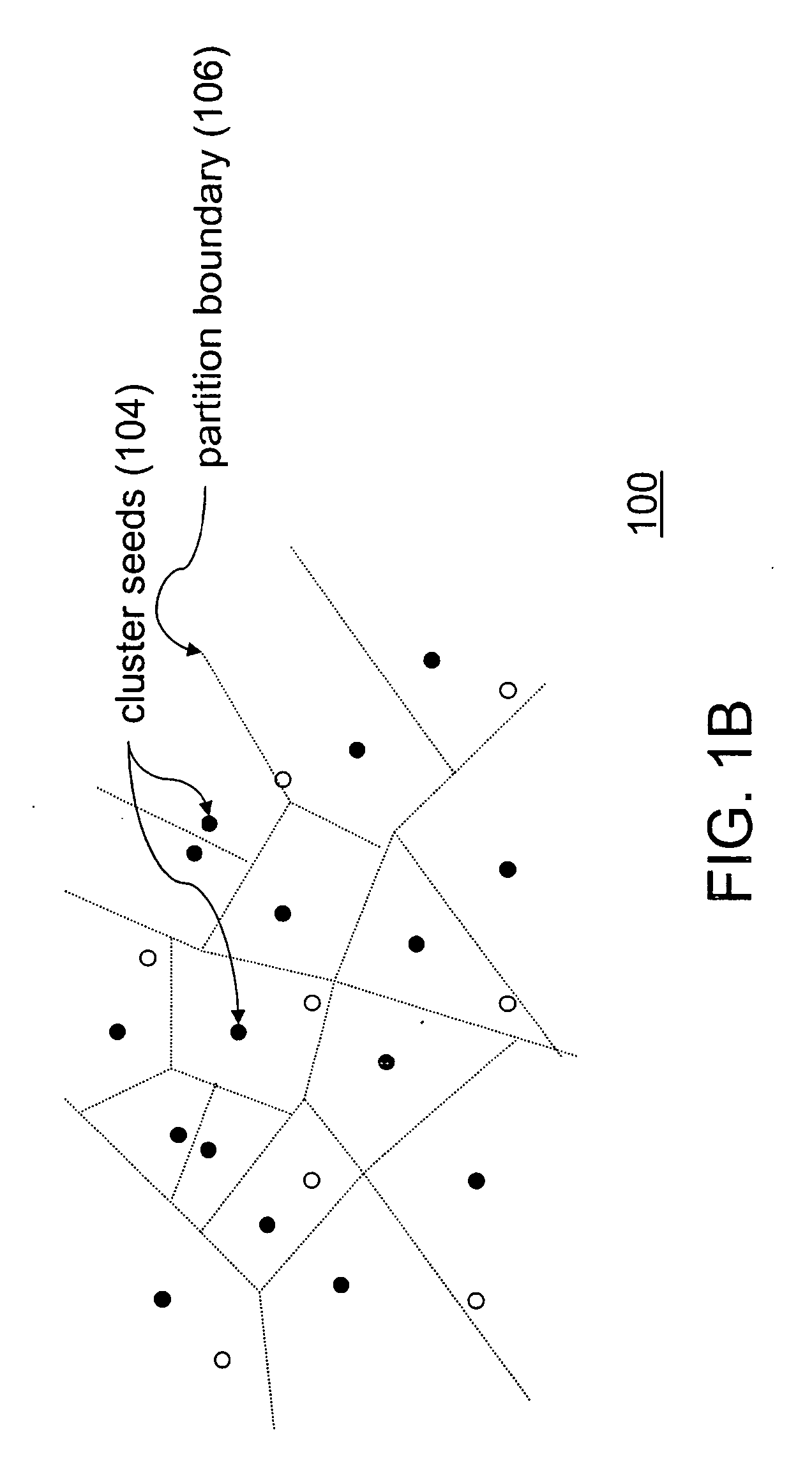Methods and apparatus for clustering templates in non-metric similarity spaces
- Summary
- Abstract
- Description
- Claims
- Application Information
AI Technical Summary
Benefits of technology
Problems solved by technology
Method used
Image
Examples
Embodiment Construction
[0022] In the following description, for purposes of explanation, numerous details are set forth, such as flowcharts and system configurations, in order to provide an understanding of one or more embodiments of the present invention. However, it is and will be apparent to one skilled in the art that these specific details are not required in order to practice the present invention.
[0023] The following description offers a detailed example of clustering a non-metric space, particularly one based upon fingerprint data.
[0024] Although fingerprint data is primarily described, such is for ease of description and is only one example of a non-metric space that may be clustered and searched in accordance with the present invention. Other biometric data including but not limited to retinal, voice, DNA, facial characteristic, iris, knuckle, and vein may also be clustered and searched in accordance with the present invention. Additionally, the present invention may be applied to any non-metr...
PUM
 Login to View More
Login to View More Abstract
Description
Claims
Application Information
 Login to View More
Login to View More - Generate Ideas
- Intellectual Property
- Life Sciences
- Materials
- Tech Scout
- Unparalleled Data Quality
- Higher Quality Content
- 60% Fewer Hallucinations
Browse by: Latest US Patents, China's latest patents, Technical Efficacy Thesaurus, Application Domain, Technology Topic, Popular Technical Reports.
© 2025 PatSnap. All rights reserved.Legal|Privacy policy|Modern Slavery Act Transparency Statement|Sitemap|About US| Contact US: help@patsnap.com



